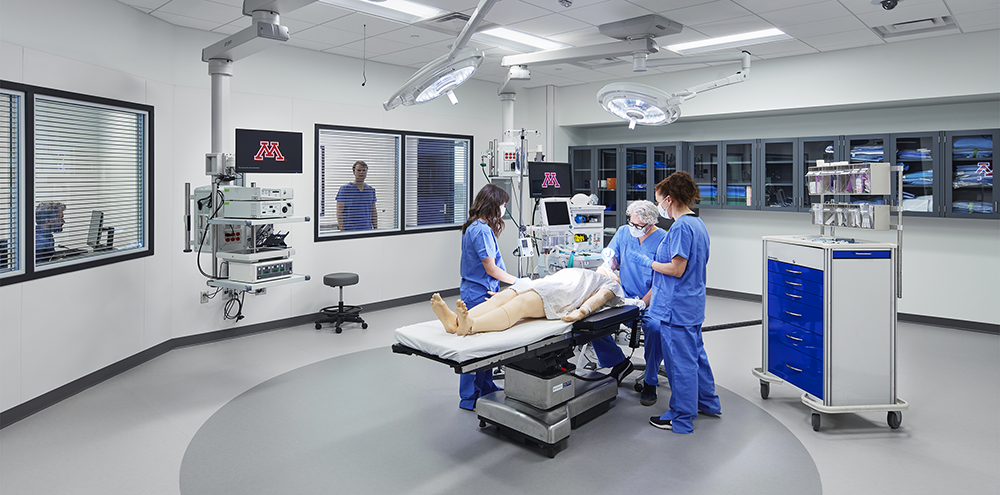Shadowing experience involves observing a professional while they work. These types of experiences can help students learn about a particular profession, and are often very passive. Students participating in shadowing are encouraged to spend time reflecting on what you are seeing and learning. Shadowing is unpaid.
Pre-health students are sometimes required, and often encouraged to use shadowing opportunities to learn more about the profession so they are confident in the decision to pursue the career path.
The Shadowing Process
This step requires the most effort since this involves finding a health professional or clinic where you can shadow. Some ways to go about this is by asking your current network of friends, classmates, and faculty or by cold calling health care settings in the Twin Cities area.
In addition, email is another option for seeking a shadowing opportunity. It may feel hard to write that first email to a physician or pharmacist, but once you get started you can build a template that you can use and adapt. Further down on this page, we include an example email that you can edit and adjust for your needs.
The following step occurs the day of the shadowing opportunity. This includes arriving at the location, meeting with the health professional and following them around for the day.
Especially for first year students, this may be a first time experience so there may be the feeling of nervousness and not knowing what to expect. In addition, you might not know what questions to ask the health professional.
Being prepared helps get the most out of the experience. This includes preparing questions to learn more about the health career, and asking the health professional beforehand what the day will look like.
Lastly, the reflection step takes place after the shadowing experience when a student takes time to look back at what they observed and learned. This can be a motivating and thrilling step as it encourages students to further pursue their desired health career.
However, there are instances where students may have a hard time processing information from the experience. In that case, talking to a mentor, advisor, or PHSRC Career Counselor may help discuss what took place and how this experience helped build your health portfolio.
Networking
The benefit of networking is that you can potentially connect with health professionals at a personal level through your classmates. All in all, you become part of the community and meet experts in your field of interest.
Note:
Start by asking fellow students, most are likely to share their network of health professionals that match your area of interest.
Online Search
This tactic allows you to search and see all the organizations in the Twin Cities.
From this broad list, you can strategically select a place to shadow that matches your personal preference and take the next step to reach out.
Cold Call
The massive benefit of making a cold call is the possibility of finding a health professional in a short amount of time, leading to fast tracking your portfolio and showing initiative towards the organization.
What to mention in a cold call:
- Your name
- Pre-health student at the U of M
- Seeking shadowing opportunities
Common Questions
Patient Interaction and Common Etiquette
As a pre-health student, your primary duty is to be actively listening and observing your physician. However, instances of patient interaction may arise. In such instances, exercise good judgment since you are not a trained healthcare professional. Allow the physician to introduce you as a pre-health student shadowing for the day, and allow yourself to greet the patient.
Having the chance to meet and observe the physician treat a patient is an enriching part of the shadowing experience, so take the opportunity to properly learn from the interaction.
Questions to Ask the Health Care Professional
While following the physician, the best you can do is to be actively listening and observing.
The best time to ask the physician questions is when wrapping up for the day. Topics to ask include about their health career, skills developed or advice learned during their undergraduate career. Some sample questions include:
- What’s the best lesson you learned on the job that college didn’t prepare you for?
- What can I be doing right now to prepare myself for a career in this health field?
- What are some highlights and lowlights of your job that weren't witnessed today?
- What resources should I be sure to look into next?
Benefits and Takeaways
What makes shadowing a positive and essential experience is the opportunity to learn and get a deeper understanding of a particular health career.
Here are some key takeaways:
- Solidifies your decision to pursue a specific health career.
- Enhances your learning and become more knowledgeable about a health career.
- Meet and network with a health professional.

